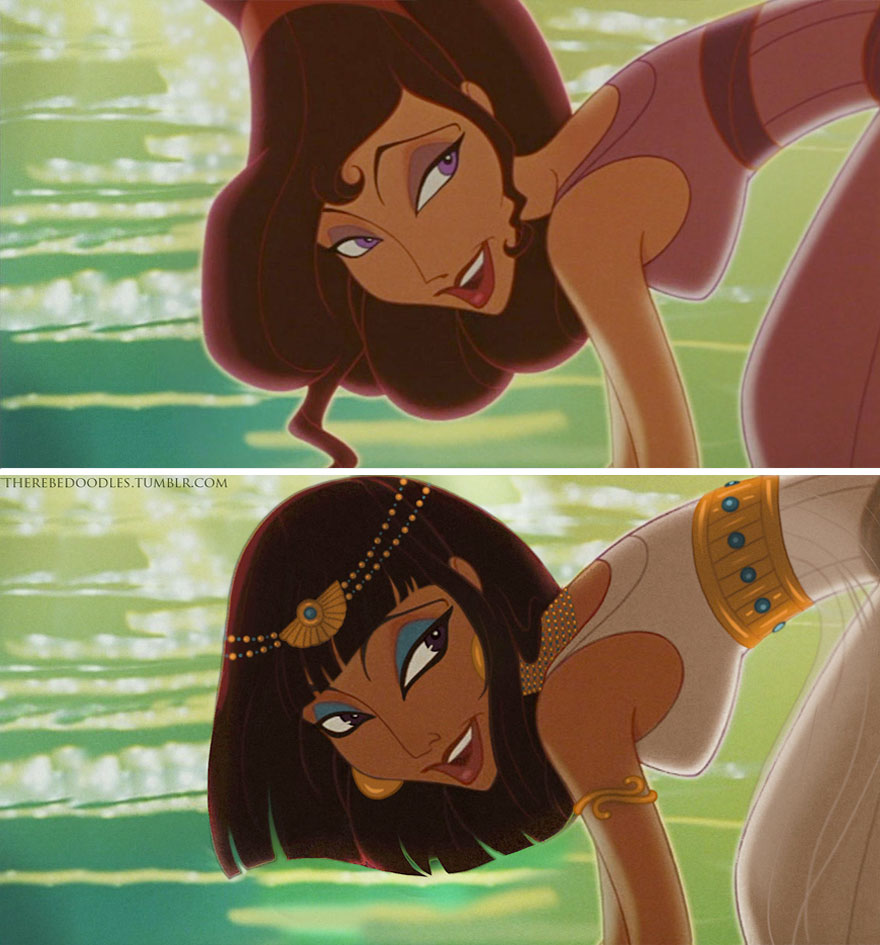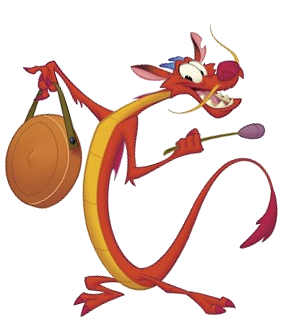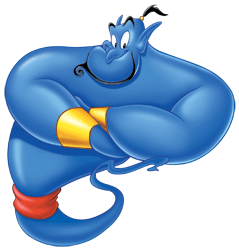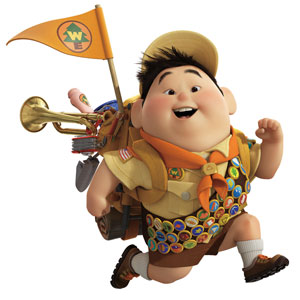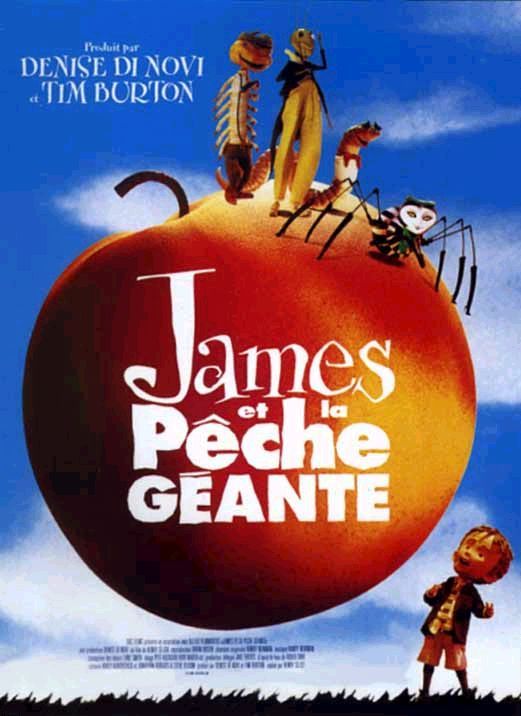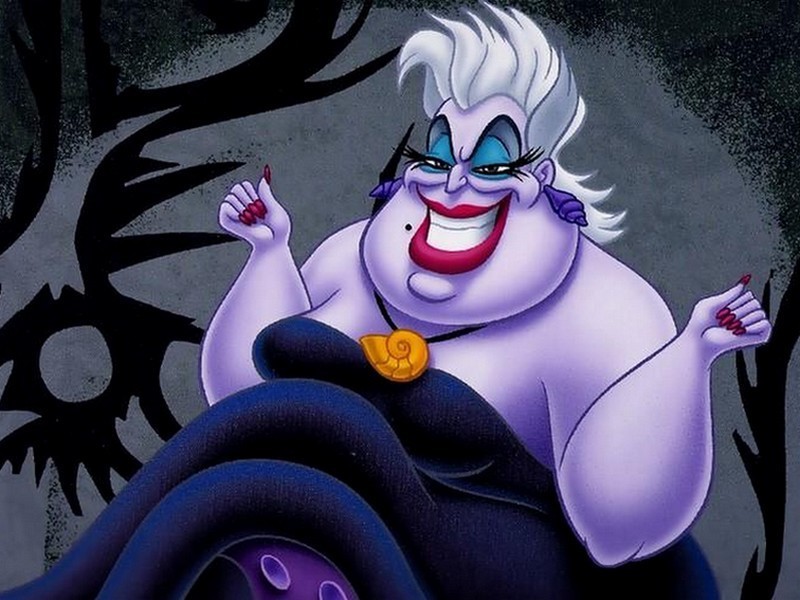I HAVE VERY VERY VERY IMPORTANT NEWS TO SHARE WITH THE WORLD.
DISNEY STUDIOS HAS ANNOUNCED THE PRODUCTION OF
A LIVE ACTION VERSION
OF
THE DISNEY CLASSIC, (and my personal favorite Disney Princess film),
MULAN
Let me explain why Mulan is my favorite Disney Princess of all time:
1. She was one of the sole princesses to represent the awkward, less than graceful girls in the Disney franchise. Unlike the others she wasn't romantically inclined, not an elegant dancer, and didn't wake up with fantastic hair and a song for the birds outside her window. Although she represented these shortcomings it presented a lot of strengths that the other female characters didn't have. Unlike the other princesses, she made real friends with those around her, (Rather than the sidekicks/ entourage's of Cinderella, Belle, Snow White). Additionally, she proved to be strong. Both mentally and physically. Rather than wailing about her problems and throwing herself onto an object with a dramatic sob, she chose strength and fought (literally) for success.
To this day, Mulan will be one of my favorite Disney characters because I relate to her on so many levels. We both have extremely close relationships with our Dad's, the type in which we strangely want to prove them wrong, yet please and make them proud simultaneously. And coming from the background of being a military kid, the idea of wanting to fill in your Dad's combat boots one day for him hits extremely close to home. I remember tears streaming down my face when I watched the movie for the first time, and her dad painfully accepts his orders to serve. Whether your orders are sending you off to fight the Huns in ancient China, or terrorists in present-day Iraq, this was a moment that all military families felt in a dark and cold place.
There is also the aspect that Mulan represented one of the very few Princesses to be "one of the guys", but still regarded with respect and admiration. Somehow Disney was able to portray a character that strongly defied typical Asian- Female- Submissive stereotypes in a way that didn't have to sacrifice her kindness and beauty.
Needless to say, the level of excitement that I feel for this movie is extremely high. Arguably higher than when I received my acceptance letter for college. I know, I know, dishonor on me, dishonor on my family, dishonor on my cow...
Monday, March 30, 2015
Sunday, March 29, 2015
Artistic Inspiration- Disney Princess Style
So, I stumbled upon an article about reimagined Disney Princesses that I absolutely fell in love with. An artist reimagined classic Disney Princesses as different races than their original design, which may sound like a tired version of "race-bending" but actually came across as eye-opening and intriguing. Although I couldn't find the name of the artist in the article, there was a comment of why he felt compelled to draw these images. In his statement he says, "no political agenda in mind for these edits (except maybe the desire to see a little more diversity), I just love working with character design.” Which makes me love his product even more. He was driven by artistic inspiration, not a board of producers telling him to include more brown people in his work. The whole purpose of diversity is defeated when it is forced and artificially synthesized. It should be automatic to look at a scene full of racially homogenous characters and feel as though it isn't an accurate representation of reality. However, I shall stop my ranting and show the beautiful work of this artist below. The link to the original article will be at the end.
1. Snow White
2. The Little Mermaid
3. Cinderella
4. Beauty and the Beast
5. Hercules
6. Sleeping Beauty
7. Princess and the Frog
8. Pocahontas
9. Aladdin
"Fat and the Land"
The amount to which I did not like this article was extensive, largely in part because I did not understand half of it. The major frustration I had with her argument was the overall lack of development in her thoughts and ideas. I feel as though she tried so hard to come across as deep and philosophical, she ended up losing her reader along the way. I had an unusually difficult time pinpointing the thesis of her claim.
From my understanding, what she begins by describing Pixar's relationship with producing "fat" characters, and importantly, how they label and describe the body size. Her thesis follows as "Up’s strategic ambiguity is supported by the film’s visual iconography, particularly as it pertains to the landscape, because that iconography constructs both intriguing departures from, and adherence to, size stereotypes.", which would imply that she is going to discuss the film's strategy in keeping the ambiguiguity around Russell's weight. However, rather than being able to follow her argument along the lines of landscape-associated iconography and size stereotypes, she consistently goes on tangents about Carl representing a patriarchy and America's national identity.
Although there were several opportunities for the author, Kate Flynn, to attempt to tie these irrelevant ideas into the repercussions of obesity portrayal, she instead tries to recreate additional arguments built onto these claims that she's making. For example, when trying to relate Russell's size with his inability to "associate with the land", rather than explaining how Pixar capitalizes on the incongruity of a non-physically fit individual being thrown into rugged terrain, she instead decides to discuss Puritans.
....Puritans?
Apparently, the "slender" and "lean" shape of Ellie is supposed to represent a natural relationship that Puritans had with the natural land around them. Because Russell isn't shaped like a Puritan, his connection to a frontier is contrived and therefore a contrast to Carl as well.
Somehow, this is supposed to be a trail of thought that the audience is expected to follow.
Overall, I don't have a strong aversion to Kate Flynn's argument. I believe that there is a lot to be said about how body image is represented in Disney films, and the idea of examining their portrayal strategy was a refreshingly original idea. However, rather than making her argument clear and easy to comprehend, I believe that Flynn's desire to emphasize the metaphysical aspect of her position ended up alienating her readers.
Saturday, March 28, 2015
Countdown, future Disney ideas
Buzzfeed usually is my source of hard-hitting journalism, never-disputed journalism, but today was the day to end that honorary legacy. I found an article titled "10 Disney Characters Who Should Definitely Get Their Own Live-Action Film", and could not agree less with the choices that were made. (This post disregards sequels/ spinoff television series ) In this post, I'll list characters that deserve the limelight for once or films that I believe should be remade into live-action films.
10. Mushu, Mulan
Do I need to explain anything else? Arguably one of Disney's most beloved characters of all time, I'm sure even older Disney fans would love to watch a film featuring this guy's humor and personality. Rather than starting at the beginning and explaining childhood, it would be great to see Mushu readjust to life after helping the Girl who saved China.
9. Genie, Aladdin
For a character so attuned to the desires and intracacies of human interaction, the audience knows nothing about Genie and his past. Being cooped up in a lamp for a couple of centuries is bound to produce at least one good story.
8. Russell, UP
Usually I dislike sequels, but this may prove to be an exception. Lets look at Russell as an adult, has he maintained the love of adventure and life that he achieved with Carl? Or has he succumbed to the bitter and cynical nature of adulthood? Imagining a situation in which he is unexpectedly brought back to the house, maybe Carl left Russell the house in his will and passes away, seems to be the expected direction of a follow-up film.
7. Pinocchio
I see a live-action version of this film taking one of two routes: either a comedy that emphasizes the the idea of "being careful of what you wish for", or a darker Tim Burton-esque film that dramatizes the end of a childhood and the dangers of growing up too fast.
6. Boo, Monsters Inc.
Similar to the idea with Russell, I also think the integral concept of family plays a huge role in the love behind this movie. On the other hand, if they simply wanted to flip the plot upside down, the movie could revolve around the idea of the monsters getting stuck in the human world. Needing to find Boo (who is now an adult), they could go on an adventure through the streets of Ohio to find the only person who can help get them home.
5. Kristoff, Frozen
Why was this poor boy left in the woods with some talking rocks and a reindeer?! How come there are at least one hundred guys cutting ice at the beginning of the film, but there ends up only being one person to sell any in the whole town?! How did he turn out so normal despite being raised by rocks? Does he have magic powers too?! Is that how he talks to his reindeer?! Give me some answers here Disney!! Plus this would be an easy and reliable way to open up the Frozen franchise to a larger demographic of consumers, boys in particular.
4. Esmerelda, The Hunchback of Notre Dame
Very little is explained about Esmerelda in her film. The only thing the audience knows is that she enjoys dancing, her only source of family is a pet goat, and that she is a Gypsy. What is it about Quasimodo that draws her to help him? After all, he is of the white ethnicity that is consistently killing her people, and by saving him she loses the only source of income she has. She comes across as far too cynical to believe in the "But I love him Daddy!" mindset that Ariel and Pocahontas succumb to.
3. James and the Giant Peach
I loved this movie as a child, less because of the plot and story and more because of how incredibly captivating every character was. Every time I watch it, I find something new and extraordinary about the design. If the same amount of detail conscientiousness is put into the costuming, set, and makeup of a live-action version, it would be very very hard to turn down.
2. Ursula, The Little Mermaid
Her character is seemingly one dimensional, but definitely has enough personality and intrigue to hold a film on her own. Much like Maleficicent, it would be really entertaining to see her interactions with Ariel from her perspective. What is she really after? Why does she have octopus legs instead of a mermaid tail? The underwater setting of the original may prove to be difficult to recreate in a live-action format, but it could make for a visually stunning product with the help of CGI.
1. Megara, Hercules
It may have been a little while since I've watched this movie, but I'm pretty sure that her story is limited to the men in her life who have done her wrong in some way. Whether it was Hades for imprisoning her, or the love she sacrificed her life for, or even Hercules who is seemingly the point of her entire existence. There is something very relatable to the conflict between the spunk and sass of her personality and the hopeless romantic tendencies that get her into trouble. In Mindy-Kaling/ Mean Girls fashion, Disney would have the opportunity to derive a film for older audiences with already well known characters.
10. Mushu, Mulan
Do I need to explain anything else? Arguably one of Disney's most beloved characters of all time, I'm sure even older Disney fans would love to watch a film featuring this guy's humor and personality. Rather than starting at the beginning and explaining childhood, it would be great to see Mushu readjust to life after helping the Girl who saved China.
For a character so attuned to the desires and intracacies of human interaction, the audience knows nothing about Genie and his past. Being cooped up in a lamp for a couple of centuries is bound to produce at least one good story.
8. Russell, UP
Usually I dislike sequels, but this may prove to be an exception. Lets look at Russell as an adult, has he maintained the love of adventure and life that he achieved with Carl? Or has he succumbed to the bitter and cynical nature of adulthood? Imagining a situation in which he is unexpectedly brought back to the house, maybe Carl left Russell the house in his will and passes away, seems to be the expected direction of a follow-up film.
I see a live-action version of this film taking one of two routes: either a comedy that emphasizes the the idea of "being careful of what you wish for", or a darker Tim Burton-esque film that dramatizes the end of a childhood and the dangers of growing up too fast.
6. Boo, Monsters Inc.
Similar to the idea with Russell, I also think the integral concept of family plays a huge role in the love behind this movie. On the other hand, if they simply wanted to flip the plot upside down, the movie could revolve around the idea of the monsters getting stuck in the human world. Needing to find Boo (who is now an adult), they could go on an adventure through the streets of Ohio to find the only person who can help get them home.
Why was this poor boy left in the woods with some talking rocks and a reindeer?! How come there are at least one hundred guys cutting ice at the beginning of the film, but there ends up only being one person to sell any in the whole town?! How did he turn out so normal despite being raised by rocks? Does he have magic powers too?! Is that how he talks to his reindeer?! Give me some answers here Disney!! Plus this would be an easy and reliable way to open up the Frozen franchise to a larger demographic of consumers, boys in particular.
4. Esmerelda, The Hunchback of Notre Dame
Very little is explained about Esmerelda in her film. The only thing the audience knows is that she enjoys dancing, her only source of family is a pet goat, and that she is a Gypsy. What is it about Quasimodo that draws her to help him? After all, he is of the white ethnicity that is consistently killing her people, and by saving him she loses the only source of income she has. She comes across as far too cynical to believe in the "But I love him Daddy!" mindset that Ariel and Pocahontas succumb to.
I loved this movie as a child, less because of the plot and story and more because of how incredibly captivating every character was. Every time I watch it, I find something new and extraordinary about the design. If the same amount of detail conscientiousness is put into the costuming, set, and makeup of a live-action version, it would be very very hard to turn down.
2. Ursula, The Little Mermaid
Her character is seemingly one dimensional, but definitely has enough personality and intrigue to hold a film on her own. Much like Maleficicent, it would be really entertaining to see her interactions with Ariel from her perspective. What is she really after? Why does she have octopus legs instead of a mermaid tail? The underwater setting of the original may prove to be difficult to recreate in a live-action format, but it could make for a visually stunning product with the help of CGI.
1. Megara, Hercules
It may have been a little while since I've watched this movie, but I'm pretty sure that her story is limited to the men in her life who have done her wrong in some way. Whether it was Hades for imprisoning her, or the love she sacrificed her life for, or even Hercules who is seemingly the point of her entire existence. There is something very relatable to the conflict between the spunk and sass of her personality and the hopeless romantic tendencies that get her into trouble. In Mindy-Kaling/ Mean Girls fashion, Disney would have the opportunity to derive a film for older audiences with already well known characters.
Sunday, March 22, 2015
Response to 17 Reasons We Need a South Asian Princess
This is a response to an article from Buzzfeed discussing the reasons why Disney needs to make a film starring a South Asian heroine, and I'm not sure how I feel about it.
The problem isn't that I don't want there to be more racial diversity within the Disney Princess collection or that I dislike the idea of having a South Asian princess. The problem is that I am concerned about the how easy it would be for writers and producers to turn this project into a well packaged bundle of stereotypes and cliche archetypes.
Pocahontas, Aladdin and the Hunchback of Notre Dame all featured minority female heroines and the majority of the backlash surrounding these characters was that they became defined by their race as opposed to their story and individuality. In my opinion, although they have made significant improvement, Disney has yet to produce a film in which a minority heroine is portrayed in a way that is widely relatable and accessible to many.
I know you may argue that Tiana from Princess and the Frog was a prime example of a minority female defying stereotypes, but I disagree that it was a successful product. Yes, it was a powerful move by producers to support, and I can appreciate the historical context of the piece. However, the fact that it made very little merchandise sales in comparison with other characters, and how the majority of the demographic purchasing the merchandise is African American households concerns me.
Why is it that millions of little girls can relate to a half-human/half-fish, but not an African American princess? Girls of all races aspire and look up to Ariel, you can see this in the amount of halloween sales and dress up sales the mermaid is racking in to this day. However, this was not the case for Tiana, as the majority of the girls buying her products are just the girls that physically look like her.
I support the push for a South Asian Princess 100%! What I don't support, is a movie that blends a character's ethnicity with her identity. By taking away the appeal of being an "everyday girl like you and me", we would only isolate her from the brand and contribute to reasons why diversity in the media is struggling.
The problem isn't that I don't want there to be more racial diversity within the Disney Princess collection or that I dislike the idea of having a South Asian princess. The problem is that I am concerned about the how easy it would be for writers and producers to turn this project into a well packaged bundle of stereotypes and cliche archetypes.
Pocahontas, Aladdin and the Hunchback of Notre Dame all featured minority female heroines and the majority of the backlash surrounding these characters was that they became defined by their race as opposed to their story and individuality. In my opinion, although they have made significant improvement, Disney has yet to produce a film in which a minority heroine is portrayed in a way that is widely relatable and accessible to many.
I know you may argue that Tiana from Princess and the Frog was a prime example of a minority female defying stereotypes, but I disagree that it was a successful product. Yes, it was a powerful move by producers to support, and I can appreciate the historical context of the piece. However, the fact that it made very little merchandise sales in comparison with other characters, and how the majority of the demographic purchasing the merchandise is African American households concerns me.
Why is it that millions of little girls can relate to a half-human/half-fish, but not an African American princess? Girls of all races aspire and look up to Ariel, you can see this in the amount of halloween sales and dress up sales the mermaid is racking in to this day. However, this was not the case for Tiana, as the majority of the girls buying her products are just the girls that physically look like her.
I support the push for a South Asian Princess 100%! What I don't support, is a movie that blends a character's ethnicity with her identity. By taking away the appeal of being an "everyday girl like you and me", we would only isolate her from the brand and contribute to reasons why diversity in the media is struggling.
Our Movie
I have a very special place in my heart for the movie Up. I usually live blog most movie reactions, but this time I would rather construct this personal response while I watch for the 100th time.
Everyone meet Brent:
We met my freshman year of high school while I lived in Florida, while he was wearing a pair of glasses in class one day, I told him that he looked like Carl Fredricksen, the main character in Up. According to Instagram, the picture below was taken 149 weeks ago.
After we started talking, we found that we both loved that movie, I loved the storyline and the poignancy of the film, and he liked the talking dogs. Regardless, we both loved the film and would talk about it often.
Flash forward two years, to our junior year. I let him know that my dad got orders for us to move to Honolulu, Hawaii and that I wouldn't be completing my senior year at our school. We were both sad, but decided to make the most of the time we had left.
Flash forward a couple of months and after a successful homecoming, he handed me a packet of notecards that said "Clues" on the front with the very explicit instructions of "DO NOT OPEN UNTIL I TELL YOU TO".
Flash forward about three and a half weeks and I receive a very mysterious text to asking if I still knew where these cards were, and if I did, to open and read them.
On the other side of each one was a question about the movie Up, hangman-style with certain letters of the answers circled. Once I was done with all of the clues, the circled letters spelled out "COME TO THE GAZEBO". (There was a park with a Gazebo about five minutes away from my house.)
I walk out to the spot he told me to go to and see this.
Brent bought 80 balloons from the nearest grocery store and an industrial ladder, climbed to the top of the gazebo and tied them to the top to make it look as much like the house from our favorite movie as possible. He handed me a giant bear (thats my head sticking out from behind it) and flowers and asked me to our Junior prom. Of course, I said yes and we had an awesome time.
Although we go to different schools now, (he is at UCLA), we both still love the movie. And to this day, hundreds of times after watching it, I still cry at the opening scene and he still looks forward to yelling "SQUIRREL!"
The End.
Sunday, March 8, 2015
Don't Be a Drag, just be Queen
As far as Putnam’s argument goes, I am conflicted with
whether or not I agree with her. On one hand, she makes a great point about how
Disney tends to assign more masculine features to their female villains.
However, on the other hand, I don’t believe that this was an effort to support
certain ideas about transgendered individuals or that the characters were even
intended to represent transgendered individuals.
Disney princesses in particular tend to follow very narrow
and limited ideas about beauty. For the most part, they are styled to have very
Western features, and arguably Old-Hollywood ideals when it comes to beauty:
long hair, big eyes, and lean hourglass figures. By following this standard,
Disney is in fact promoting a standard that most applies to specific ideas
about sexuality. Putnam supports this idea in her recent article “Mean Ladies:
“Transgendered Villains in Disney Films” “In making each heroine’s outfit
form-fitting, especially around her breasts, waists, and hips, Disney
accentuates the ideal heterosexual female figure to viewers: curvy breasts and
hips, an unrealistically small waist- and tight apparel to show it off”. To
further this position, Putnam illustrates how this applies to the male
characters in these installments as well with “Taller than each respective
princess, broad-shouldered, square-jawed, and muscular, their attributes become
standardized heterosexual male physical characteristics”. This is a point that hadn’t before registered
in my mind when I consumed Disney media. The male counterparts of the Disney
characters never wear pink, speak about maintaining their appearance, or
display any overtly artistic appreciation, (i.e. speaking about a love of dance
or song, having a job in the arts).
The characters that don’t fit into
this constricted scope of appearance and personality are either the sidekick
characters intended to provide comic relief (ex., a weak Mushu in Mulan, or an
emotionally sensitive Flounder in the Little Mermaid) or they are the villains
that are out to harm Disney’s beloved protagonists. Putnam makes a point in
stating that when these ideas about gender normativity are enforced
consistently, society can reflect by therefore being less accepting of
individuals who don’t fit into this constricted scope of “normality”. This is
where my opinion with Putnam becomes one that is less clear in terms of
agreement and disagreement. In an attempt to further her argument, she ends up
giving credibility to the opposing views that she’s trying to discredit, “While
there are no Disney characters that actively announce their homosexuality or
transgenderism, there is considerable evidence that Disney’s gender-bending
characters are flourishing,” in this sentence alone, Putnam commits the crime
that she’s denouncing. She’s assuming that all characters that display
unconventional characteristics are transgendered, which seems a lot like the
stereotyping to me. None of the characters that were used as examples in her
piece were noted as transgendered. While I agree that the way in which Disney villains
are characterized presents a problem in how people are perceived by society, I
don’t believe that Disney bears the burden of these implications. If she were
to expand her argument to pick a bone with media as a whole rather than Disney
alone, I would have an easier time agreeing more wholeheartedly.
Breaking heterosexual norms in Pride Rock
Interestingly enough, although I didn’t entirely agree with
this piece, it was one of the first articles that I’ve read in which I felt
truly entertained and involved. Once again, while there was several moments
throughout her argument that made me question her logic, I loved her writing
style because I felt like an active and engaged consumer of the text.
Especially in the world of academic writing, it is common for me to feel
disconnected to not only the text of the article, but the author as well
because the material comes across as a lecture rather than a conversation.
There is usually no room for me to formulate my opinions about the subject
while reading because the author is so busy shoving their ideas into every open
nook and cranny of my mind available. It was easier to agree with her because
she pointed out the ridiculousness of the extreme beliefs and separated herself
from it. Basically by starting her argument by criticizing the views her
audience would disagree with the most, she essentially misdirected the negative
attention away from her own opinions. If I were to summarize the way I
perceived her tone it would be along the lines of “Look guys, these idiots over
here think Disney is promoting a gay agenda, and I agree with you THEY are the
crazy ones. But for the record Timon and Pumbaa are definitely gay. ”
Points I disagreed with:
1.
being isolated from society or an outcast is not
a prerequisite for homosexuality.
2.
The two contradicting morals of the story was a
point I definitely hadn’t thought about before, but I thought the whole point
of the movie was about finding a balance between the two and being able to find
joy in your responsibilities like Mufasa.
3.
A consistent theme throughout her argument
equated musical theatre and artistic expression to being gay. Another flawed
generalization.
Points I agreed with:
1.
Although wearing a grass skirt has no indication
of weakness in Polynesian culture, wearing a hibiscus flower over your left ear
means you’re in a relationship. I’m assuming the author is aware of this
because she included the detail of the flower placement in her description. If you were to wear it over your right ear it
would mean you’re single.
2.
The discussion the two had over whether or not
they were going to raise Simba did not strike me as a loving couple taking in a
foster child but rather a scheming pair of friends.
Timon is portrayed in an usually feminine manner
for a Disney character, there definitely are moments in which he illustrates a
fondness for actions typically attributed to women.
Subscribe to:
Comments (Atom)




